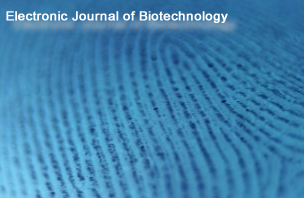Abstract
Hemicellulosic agricultural by-products such as corn stover (CS) are highly available materials which represent an opportunity to develop value added products. Native Aspergillus niger GS1 was used for solid-state fermentation (SSF) on alkali pre-treated CS (ACS) aimed to optimize xylanolytic enzymes production, and their effect on in vitro ruminal and true digestibility of ACS. Enzyme production was empirically modelled using a fractional factorial design 29-5, and the resulting significant factors were glucose, yeast extract and two mineral salts, which were arranged in a Draper-Lin optimization design at two levels. Predicted optimum xylanolytic activity of 33.6 U (mg protein)-1 was achieved at 48 hrs of SSF, and was validated by confirmatory experiments. ACS was incubated with a semipurified enzymatic extract (EE) showing a xylanolytic activity of 1600 U kg-1 dry ACS for 12 hrs before exposure to cow's ruminal liquid for 72 hrs, which led to 5% and 10% increase of in vitro ruminal and true digestibility, respectively. CS is a readily available by-product in different regions which after alkaline treatment and partial hydrolysis with the EE, may be advantageously used as supplement for ruminant feed.
Upon acceptance of an article by the journal, authors will be asked to transfer the copyright to Electronic Journal of Biotechnology, which is committed to maintain the electronic access to the journal and to administer a policy of fair control and ensure the widest possible dissemination of the information. The author can use the article for academic purposes, stating clearly the following: "Published in Electronic Journal of Biotechnology at DOI:10.2225/volXX-issueX-fulltext-XX".
The Copyright Transfer Agreement must be submitted as a signed scanned copy to biotec@ucv.cl. All authors must send a copy of this document.
